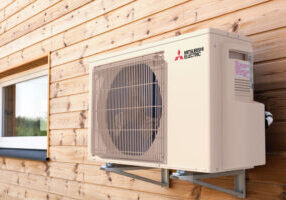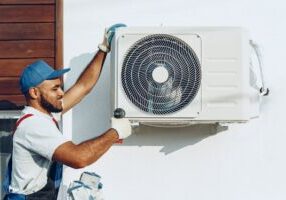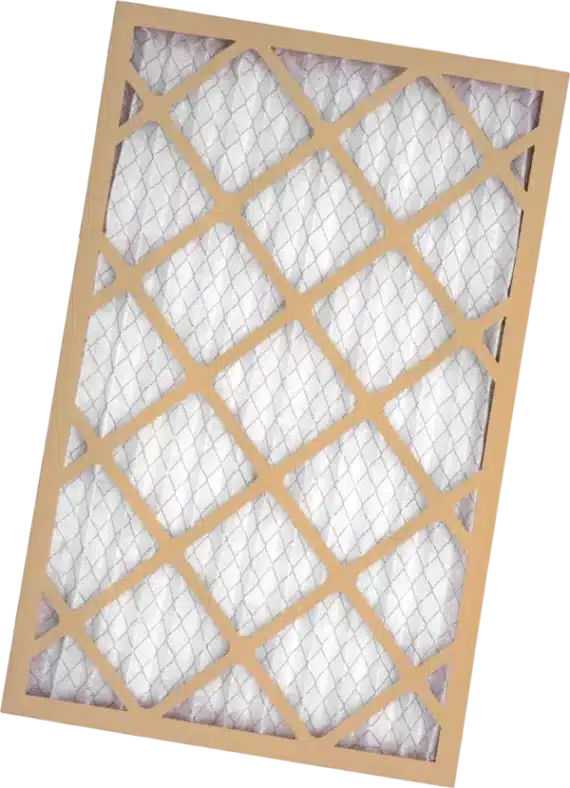As a homeowner, understanding HVAC energy efficiency ratings can be technical and confusing, but it is a crucial aspect of any heating or cooling system.
These ratings directly impact the amount of energy used and determine the monthly cost of your bill. By selecting an energy-efficient system, consumers can save on energy bills and minimize their carbon footprint.
Two essential factors to consider when determining the efficiency of heating and cooling systems are the Annual Fuel Utilization Efficiency (AFUE) for furnaces and Seasonal Energy Efficiency Ration (SEER) for air conditioners.
In this article, we’ll explore the significance of HVAC energy efficiency ratings for a furnace and an air conditioner and how it can benefit consumers regarding cost savings and environmental impact.
What is AFUE?

The Annual Fuel Utilization Efficiency (AFUE) determines the percentage of fuel converted into heat. It’s calculated on a scale of 0 to 100%. A higher rating means the system is better at utilizing energy and reducing waste during heating.
For example, an AFUE rating of 80% means that 80% of the fuel is converted into heat, while the remaining 20% is lost as waste. A more efficient furnace translates to lower heating costs, making it a wise investment for homeowners.
The current minimum federal standard for AFUE rating in new heating systems is 80%. A rating of 90% to 93% is considered a mid-efficiency system, while a rating of 94% to 98% is classified as a high-efficiency unit.
What is SEER?
The SEER rating, much like AFUE, measures the energy consumption of air conditioners and heat pumps for cooling a room. However, unlike the AFUE, SEER standards are set regionally. For example, regions that experience warmer climates will have a higher standard than the ones in cooler areas.
The Department of Energy (DOE) recently implemented the SEER2 standard, which increased the minimum SEER rating by 8 to 10%. The new standard aims to promote a sustainable future and help consumers save on energy costs. By adhering to this standard, individuals can contribute to a greener environment.
Benefits of Having a High-Efficiency System
Investing in a high-efficiency system should be a top priority when purchasing any system for your home. Here are some key benefits of high-efficiency units:
Lower energy bills:
A high-efficiency system utilizes less energy, resulting in lower monthly utility bills, making it a more cost-effective option for homeowners.
Better performance:
High-efficiency systems are designed with advanced technology, ensuring that they operate more efficiently, last longer, and require fewer repairs.
Positive Environmental Impact:
High-efficiency systems produce fewer emissions, which is better for the environment and reduces your carbon footprint, making it a more sustainable choice for homeowners.
Factors that Impact Energy Efficiency
Energy loss is a major concern for homeowners seeking to maximize the efficiency of their heating and cooling systems. Several factors can contribute to energy loss, including:
Poor insulation:
Insulation is critical in preventing heat loss and enabling a furnace to operate more efficiently. Without proper insulation, heat can escape, and the furnace needs to work harder to achieve the desired temperature.
Inadequate maintenance:
Regular Maintenance and inspections are crucial for all types of systems. Failing to do so will negatively affect performance and efficiency. Maintenance is also vital in identifying issues early and preventing them from becoming more significant.
At Spurk HVAC, we offer a maintenance program to ensure that your HVAC units are being taken care to the fullest capacity in a timely manner.
Leakage:
Any source of leakage, whether from windows and doors or ductwork, can cause energy waste. Ensure all sources of leakage are sealed and dealt with for maximum efficiency.
By addressing these issues, you can help increase the efficiency of your system, maximizing all the benefits that a high-efficient system brings.
Closing Note
Even though understanding HVAC energy efficiency ratings can be technical and confusing, we hope this article served as a quick reference that can help any homeowner when understanding basic energy efficiency ratings.
At Spurk HVAC, we take pride in providing top-notch services to ensure your HVAC system runs smoothly and efficiently. We offer comprehensive maintenance and inspection services that carefully go through your system, identifying and addressing any issues promptly.
Contact us today to schedule your planned maintenance and discover why Spurk HVAC is the go-to source for all things related to HVAC.









